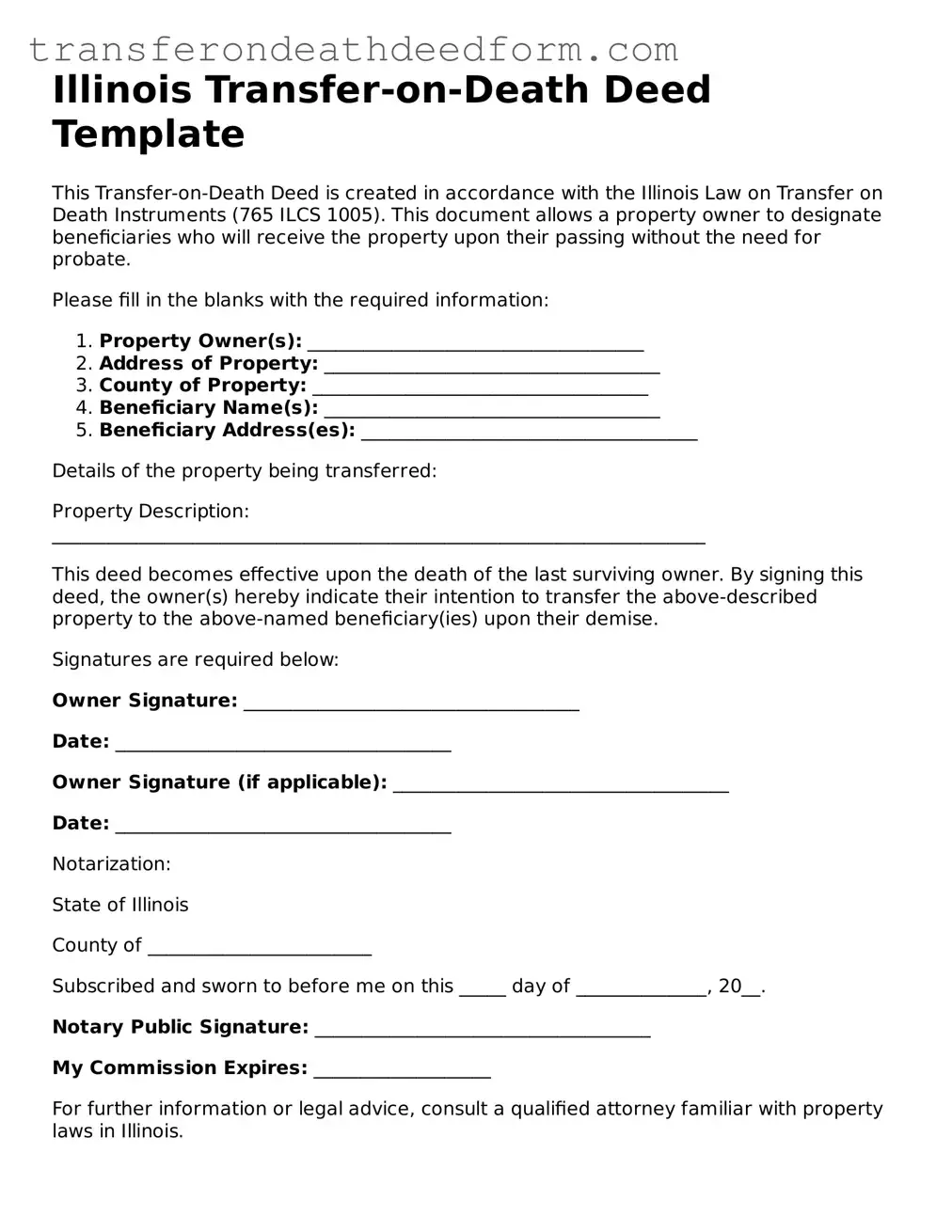Illinois Transfer-on-Death Deed Template
This Transfer-on-Death Deed is created in accordance with the Illinois Law on Transfer on Death Instruments (765 ILCS 1005). This document allows a property owner to designate beneficiaries who will receive the property upon their passing without the need for probate.
Please fill in the blanks with the required information:
- Property Owner(s): ____________________________________
- Address of Property: ____________________________________
- County of Property: ____________________________________
- Beneficiary Name(s): ____________________________________
- Beneficiary Address(es): ____________________________________
Details of the property being transferred:
Property Description: ______________________________________________________________________
This deed becomes effective upon the death of the last surviving owner. By signing this deed, the owner(s) hereby indicate their intention to transfer the above-described property to the above-named beneficiary(ies) upon their demise.
Signatures are required below:
Owner Signature: ____________________________________
Date: ____________________________________
Owner Signature (if applicable): ____________________________________
Date: ____________________________________
Notarization:
State of Illinois
County of ________________________
Subscribed and sworn to before me on this _____ day of ______________, 20__.
Notary Public Signature: ____________________________________
My Commission Expires: ___________________
For further information or legal advice, consult a qualified attorney familiar with property laws in Illinois.
